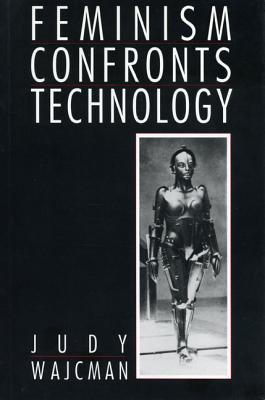

 |

|

The average rating for Skills @ Work:applying Technology based on 2 reviews is 3.5 stars.
Review # 1 was written on 2014-08-30 00:00:00 Harry Gretzschel Harry GretzschelA. Synopsis: This book examines women’s relationship to technology. It challenges the assumption that technology is gender neutral. Wajcman examines only specific areas where the gender of technology has had an impact; office technologies, reproductive technologies, domestic technologies, the built environment (the house itself), the computer. B. Feminist critiques of science and technology 1. Women have achieved little access to scientific institutions. So what are the main critiques of science by feminists? a) Eco-Feminism: Women will liberate the earth because they are more in tune with nature b) Psychoanalysis: The Object-Relations School. Men and women relate to the world in different ways. Man must reject his former dependencies on his mother. This male mindset of detachment and mastery has been written into the definition of science itself. c) Essentialism: The assertion of fixed, unified and opposing female and male traits. Part of the cultural feminists desire for a new model of science. 2. From science to technology a) Difficulty in criticism here is the conflation of science and technology b) There is a dearth of material on women and technology 3. Wajcman’s definition of technology (3 parts) a) Technology as knowledge: Verbal, tactile, mathematical knowledge which can be systematized, such as engineering b) Human activities: How people use the technology. Like weaving cloth. My thought is that this is where technology links with science. Example a computer is a technology but is can be used for science. c) Hardware: The physical objects themselves. C. Office technology and gender divisions: This chapter examines how gender divisions in the workplace affect the direction and pace of technological change 1. The impact of technology on the sexual division of labor a) Office automation and women’s employment (1) Pessimistic view of the introduction of the computer into the workplace (2) Women’s health in using the VDT (3) Reduction of the need for typing skills (deskilling) b) The relocation of work (1) Post-modernism idea of working at home--the electronic cottage (2) This has caused the majority of men to become work-centered (3) Women became family-centered (4) Thus, computer based homework reinforces sexual divisions D. Reproductive technology: Delivered into man’s hands 1. Pregnancy and childbirth are controlled by more sophisticated and intrusive technologies (but all medicine is like this) 2. Two opposing Feminist perspectives on reproductive technology a) Technology as a key to women’s liberation: An IVF does not cure fertility; it provides an avenue for biological motherhood through technological intervention b) Reproductive technology as patriarchal domination by the exploitation of women’s bodies 3. The medicalization and mechanization of childbirth a) Delivered into man’s hands: Midwives have declined as the male doctor was defined as the expert. b) The sexual relations of contraceptive technology (1) Cultural values rather than medical or technical considerations have shaped modern contraceptive technology (2) This explains the emphasis on hormonal contraceptives and little emphasis on barrier methods (3) The development of a condom came from a desire to stop VD not for birth control E. Domestic technology: labor-saving or enslaving? 1. Gender specialization and household technology a) Domestic technology has reinforced the sexual division of labor b) Men prefer to watch TV silently while women are to guilty and must clean the house c) Women are estranged from the video recorder 2. The rest of this chapter conforms to Cowan’s ideas F. The built environment: The argument here is that sexual divisions are built into the houses themselves and the entire urban system 1. The house itself is a technological construct a) The built environment is our homes, their locations, etc... b) Here she argues that the built environment reinforces a domestic ideal which emphasizes the importance of the home as a women’s place and a man’s haven 2. Automobiles reinforce this gendered division a) Argument here is that the transport system particularly the car restricts women’s mobility and exacerbates women’s confinement of the home b) This is mainly true for older women and single mothers [129] c) The modern city is designed around men’s interests. They leave for work at the same time and the public transportation system accommodates them, d) But, women who must wait for their kids to go to school are not helped. e) Thus, the modern city is built to the detriment to women G. Technology as masculine culture: The computer 1. Men and machines a) Giving birth to the bomb-- the masculine manhattan project b) Obsession with control (a computing fraternity) c) Forms of masculinity--there are different types of masculine environments d) Combat, the heroic masculinity. Video games are gendered masculine 2. Women and machines: cognition or culture? a) The computer is the main example here because it was a new technology and could have been gendered female b) Computing inequality at school c) Space-Wars, games for boys |
Review # 2 was written on 2020-10-11 00:00:00 Njp Goldsmith Njp GoldsmithRead about a third of it over the past month and a half and preoccupied myself with too many other books. Outside of the point of debate of is there sexism in science or is science sexist in itself, harping on valid complaints about real problems just gets old after a while. |
CAN'T FIND WHAT YOU'RE LOOKING FOR? CLICK HERE!!!